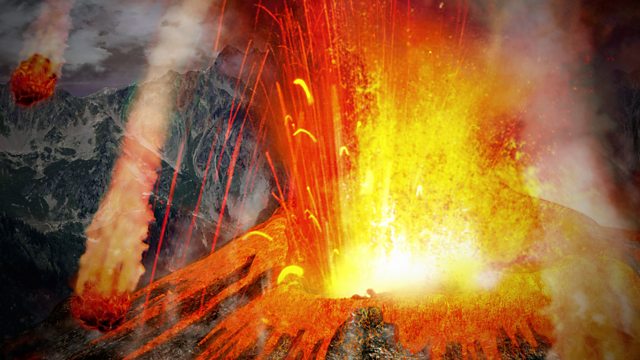Episode 1
Why did almost all of life become extinct 250 million years ago? Adam Rutherford explores how past extinctions made the modern living world.
Why did almost all life go extinct 250 million years ago? Why on four other occasions in the geological history has the living world experienced sudden episodes of global mega-death with the majority of species being annihilated? These are two of the questions Adam Rutherford explores in this new series on extinction.
The programme travels to an unassuming suburban development in the middle of Pennsylvania in search of the traces of one of these mass extinction events. Geologist Paul Olsen is as familiar a sight in the neighbourhood as the local school bus, the generously proportioned identikit homes and neat lawns. Beneath the veneer of suburban banality here he's uncovered a thin layer of rock recording one of the great five episodes of global catastrophe in the history of life on Earth. During this event 202 million years ago at least three quarters of the species of animals and plants died out.
The mass extinction is called the End Triassic event. On land, an entire diverse and planet-dominating group of crocodile like creatures were wiped out. The ecological roles they left empty were then filled by dinosaurs, some of which survived the extinction event. In fact the global mega-death event enabled the rise of the dinosaurs to world domination for the next 140 million years on the planet.
The root cause of this little known extinction event seems to have been a vast volcanic outpouring of lava in what is now the eastern United States and Morocco (the two were joined together back then).
Some of the ancient lavas jut through the shorn grass verges of Dr Olsen's suburban study area. They are just fragments of a colossal eruption of lavas which covered an area as large as the surface of the Moon.
An even more enormous volcanic episode in Siberia appears to be the most likely suspect for the most disastrous extinction moment in the history of the living world - a brief episode 250 million years ago when, according to some estimates, 96% of species both on the land and in the sea became extinct. It was the day (or at least several thousand years) when life almost died out on Earth.
But why did these volcanoes cause the diversity of life such trauma? That's the question under investigation by scientists such as Paul Olsen of Columbia University, New York featured in the programme. Jennifer McElwain of the University of Dublin, Jonathan Payne of Stanford University, Mike Benton of Bristol University and Paul Wignall at Leeds University are on the case.
There is still debate about the species death toll at these times of great dying. As Peter Wagner of the Smithsonian explains, palaeontologists can be led astray by tricky fossils known in the trade as Lazarus taxa and Elvis taxa. Also enlivening the extinction discourse are the Red Queen and the Court Jester. For a full explanation of the charming jargon of mega-death, tune in.
As presenter Adam Rutherford explains, recognition of the profound importance of mass extinction events in shaping the evolution of life is something that's quite recent - within the last three decades. It was something Darwin had dismissed. Adam also asks if the study of mass extinction events in deep time has any relevance and offers insights on the levels of man-made extinction of species on the planet today and how our biodiversity crisis may develop in the future. The interviewees in this programme say yes.
Adam Rutherford is an evolutionary biologist who works for the science journal Nature. He is a regular presenter of 大象传媒 Radio 4 and TV science programmes.
Producer: Andrew Luck-Baker.
Last on
Broadcasts
- Tue 15 May 2012 11:00大象传媒 Radio 4
- Thu 17 May 2012 21:00大象传媒 Radio 4

